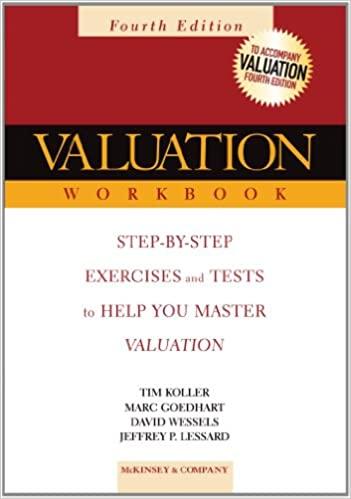Question
1. Which of the following is not used in the calculation of cost per equivalent unit? A Equivalent units B Beginning inventory costs C .Current
1. Which of the following is not used in the calculation of cost per equivalent unit? A Equivalent units B Beginning inventory costs C .Current manufacturing costs D.Current nonmanufacturing cost 2.Which of the following is not a category used to reconcile the number of physical units using the weighted average method of process costing? A.Ending units in process B. Units started C. Cost of goods sold D. Units completed 3. For a firm that uses the weighted average method of process costing, which of the following must be true? A. Equivalent units must be greater than or equal to physical units. B. Physical units must be greater than or equal to equivalent units. C. Physical units must be equal to equivalent units. D.Physical units can be greater than or less than equivalent units. 4. Conversion costs consist of A. direct labor and manufacturing overhead. B. raw materials and manufacturing overhead. C. all costs of production. D. raw materials and direct labor. 5. Cost per equivalent unit is kept separate for direct materials and conversion costs because A. the ending inventories were different for the two categories. B.the equivalent units were different for the two categories. C. the total manufacturing costs were different for the two categories. D. the physical units were different for the two categories. 6.Which of the following is a requirement under the Sarbanes-Oxley Act? A. Background checks must be performed on all employees . B. Management must issue a report that indicates whether the financial statements are free of error. C. Management must conduct a review of the company's internal control system. D.Financial statements must be audited by a Big Four accounting firm. 7. Which of the following is not a provision of the Sarbanes-Oxley Act? A. Public companies must adopt a code of ethics for senior financial officers. B. Stiffer penalties for fraud in terms of monetary fines and jail time. C. Executives can avoid penalties for fraud by declaring personal bankruptcy. D.Management must issue a report that indicates whether internal controls are effective at preventing errors and fraud. 8. What determines the difference between a variable and a fixed cost? A. Whether the total cost changes when activity levels change. B. Whether the total cost can be traced to a specific cost object. C. Whether the total cost is relevant to a particular decision. D. Whether the total cost is related to manufacturing or nonmanufacturing activities. 9. A fixed cost A. goes down in total when activity increases. B. goes down per unit when activity increases. C. goes up in total when activity increases. D. goes up per unit when activity increases. 10. Which of the following is an indirect cost of manufacturing a table made of wood and glass, for a firm that manufactures furniture? A. The cost of rent on the factory where the table is manufactured. B. The cost of the labor used to assemble the table. C. The cost of the wood in the table. D. The cost of the glass in the table. 10. An actual outlay of cash is a(n) A. cost object. B. direct cost. C. opportunity cost. D. out-of-pocket cost. 11. For a cost to be relevant, it must A. have already been incurred. B. differ between decision alternatives. C. not be a differential cost. D. not influence a decision. 12. What determines the difference between a product cost and a period cost? A. Whether the cost can be traced to a specific cost object. B. Whether the cost changes when activity levels change. C. Whether the cost is relevant to a particular decision. D. When the cost will be matched against revenue on the income statement. 13.When are period costs counted as inventory? A. Never. B. After products are sold. C. After products are completed, but before they are sold. D. Before products are sold.
Step by Step Solution
There are 3 Steps involved in it
Step: 1

Get Instant Access to Expert-Tailored Solutions
See step-by-step solutions with expert insights and AI powered tools for academic success
Step: 2

Step: 3

Ace Your Homework with AI
Get the answers you need in no time with our AI-driven, step-by-step assistance
Get Started


